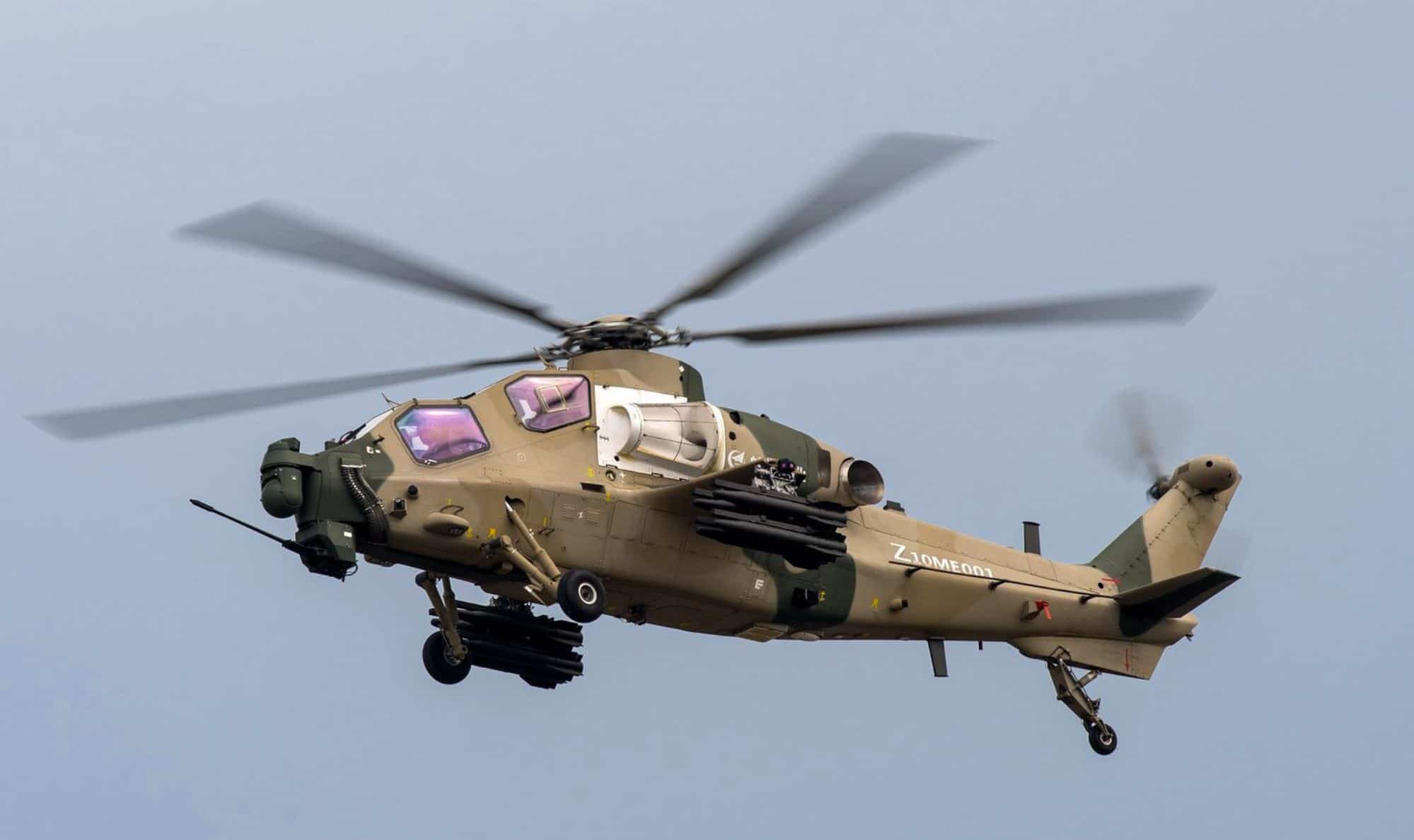SOURCE: AFI


In a strategic move to bolster its aerial combat capabilities and maintain parity with its regional rival, the Pakistan Army is reportedly planning to expand its procurement of Z-10ME attack helicopters from China. This development comes as a direct response to India’s likely acquisition of 156 indigenously developed Light Combat Helicopters (LCH) Prachand, a platform designed to enhance India’s military presence along its borders with Pakistan and China. Adding a new dimension to this acquisition, Pakistan is exploring local assembly of the Z-10ME helicopters, potentially integrating advanced Turkish weaponry to elevate their operational effectiveness.
India’s LCH Prachand, meaning “Fierce” in Hindi, is a multi-role attack helicopter developed by Hindustan Aeronautics Limited (HAL) to meet the Indian armed forces’ needs in high-altitude and diverse terrains. With the Indian Ministry of Defence issuing a Request for Proposal (RFP) in June 2024 for 156 units—90 for the Army and 66 for the Air Force—the deal, valued at approximately ?53,000 crore (US$6.1 billion), is expected to be finalized by March 31, 2025. The Prachand’s ability to operate at altitudes exceeding 5,000 meters, coupled with its arsenal of air-to-air and air-to-ground missiles, makes it a formidable asset, particularly in contested regions like Ladakh and the Siachen Glacier.
To counter this growing threat, Pakistan is turning to its long-standing ally, China, to accelerate the delivery and expansion of its Z-10ME fleet. The Z-10ME, an export variant of China’s Z-10 attack helicopter, has been tailored for enhanced performance with a more powerful WZ-9G engine, reduced infrared signature, and advanced countermeasures. Reports indicate that Pakistan is set to receive its first batch of these helicopters in 2025, following delays in earlier attempts to procure alternatives like the U.S.-made AH-1Z Viper and Turkey’s T129 ATAK, both stymied by export restrictions and geopolitical hurdles.
What sets this procurement apart is Pakistan’s ambition to go beyond mere acquisition. Sources suggest that the Pakistan Army is negotiating with China to establish a local assembly line for the Z-10ME, a move that would mark a significant step toward self-reliance in defense manufacturing. This initiative mirrors India’s “Make in India” push and could reduce Pakistan’s dependence on foreign supply chains while fostering domestic technical expertise. Local assembly would also allow for customization, enabling Pakistan to adapt the Z-10ME to its specific operational needs along the Line of Control (LoC) and in counter-insurgency missions.
Further enhancing this strategy, Pakistan is exploring a trilateral collaboration with Turkey to integrate advanced weaponry into the Z-10ME. Turkey, a key player in defense technology with its successful T129 ATAK program, brings a wealth of experience in helicopter subsystems, avionics, and munitions. While the T129 deal with Pakistan fell through due to U.S. refusal to export its engines, Ankara’s expertise remains highly valuable. Potential integrations could include Turkish-developed systems like the UMTAS anti-tank missiles, Cirit laser-guided rockets, or advanced avionics suites—capabilities that would significantly boost the Z-10ME’s lethality and survivability against India’s Prachand and other threats.
This approach reflects Pakistan’s pragmatic shift toward deepening ties with China and Turkey, circumventing Western sanctions and delays. The Z-10ME, while not as battle-tested as the U.S. AH-64 Apache, offers a cost-effective alternative with a combat range of 800 km and a payload capacity of around 1,500 kg. When paired with Turkish weapons, it could rival the Prachand’s versatility, which includes a 700 km range and high-altitude performance tailored for Himalayan warfare. The Prachand’s edge lies in its proven ability to land at altitudes up to 15,800 feet, a capability the Z-10ME has yet to demonstrate convincingly in similar conditions.
For Pakistan, this procurement is not just about matching numbers but also about signaling resolve. India’s 156 Prachand units will bolster its Army and Air Force along both the western and northern fronts, amplifying its firepower against Pakistani armor and infantry. By expanding its Z-10ME fleet—potentially to 30 or more units, though exact figures remain undisclosed—Pakistan aims to maintain a credible deterrent. Local assembly and Turkish integration could also position Pakistan as a future exporter of customized Z-10MEs, mirroring India’s export ambitions for the Prachand, which has attracted interest from countries like Nigeria and Argentina.
NOTE: AFI is a proud outsourced content creator partner of IDRW.ORG. All content created by AFI is the sole property of AFI and is protected by copyright. AFI takes copyright infringement seriously and will pursue all legal options available to protect its content.